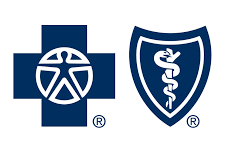Pneumonia
- Skip The Waiting Room
- No Exposure To Other Sick Patients
- No Patient Travel Is Required

Pneumonia Overview
Pneumonia is an infection that inflames the air sacs in one or both lungs. These air sacs may fill with fluid or pus, causing a range of symptoms that can vary from mild to severe. Understanding pneumonia is essential for patients, caregivers, and healthcare professionals to facilitate early diagnosis and effective treatment.
Understanding the Causes and Risk Factors
Various infectious agents, including bacteria, viruses, and fungi, can cause pneumonia. Common causes include:
- Bacteria: Streptococcus pneumoniae is one of the most common bacterial causes.
- Viruses: Influenza (flu) viruses, respiratory syncytial virus (RSV), and SARS-CoV-2 (the virus responsible for COVID-19).
- Fungi: More common in individuals with weakened immune systems.
Risk factors for pneumonia include age (young children and older adults are more susceptible), chronic diseases, weakened immune systems, and lifestyle factors such as smoking and excessive alcohol consumption.
Recognizing Pneumonia Symptoms in Adults and Children
It’s crucial to recognize the symptoms of pneumonia early. Symptoms can vary based on the type of pneumonia and the patient’s age.
In Adults:
- Cough, which may produce phlegm
- Fever, sweating, and chills
- Shortness of breath
- Chest pain when breathing or coughing
- Fatigue and muscle aches
In Children:
- Rapid or difficult breathing
- Cough
- Fever
- Vomiting or diarrhea
- Lack of energy and difficulty feeding in infants
Importance of Early Diagnosis and Seeking Medical Care
Early diagnosis and treatment of pneumonia can prevent complications and improve outcomes. If you or someone you care for exhibits symptoms of pneumonia, it’s vital to seek medical attention promptly. Delaying care can lead to more severe illness and complications, especially in vulnerable populations like young children and older adults.
Diagnostic Tests for Pneumonia
Healthcare professionals use various tests to diagnose pneumonia, including:
- Physical Examination: Listening to the lungs with a stethoscope.
- Chest X-ray: Helps visualize the extent and location of the infection.
- Blood Tests: Check for infection and identify the causative agent.
- Sputum Test: Analyzes the mucus produced by coughing to identify the infection.
- Pulse Oximetry: Measures the oxygen level in the blood.
Treatment Approaches – Rest, Antibiotics, and Other Medications
Treatment depends on the type and severity of pneumonia:
- Rest is essential to help the body fight the infection.
- Antibiotics are prescribed for bacterial pneumonia.
- Antiviral medications may be used for viral pneumonia.
- Antifungal medications for fungal pneumonia.
- Over-the-counter medications can help manage symptoms like fever and pain.
In severe cases, hospitalization may be necessary to provide oxygen therapy, intravenous fluids, and other supportive care.
Preventive Strategies – Vaccination and Hygiene Practices
Prevention plays a crucial role in reducing the incidence of pneumonia:
- Vaccination against flu, pneumococcal pneumonia, and other infections can significantly lower risk.
- Good hygiene practices, such as regular handwashing and avoiding close contact with sick individuals, are also essential.
When to Contact a Healthcare Professional
It’s important to contact a healthcare professional if you or someone you care for experiences:
- Persistent fever or cough
- Difficulty breathing or chest pain
- Symptoms that worsen or fail to improve with treatment
- Signs of dehydration or confusion in older adults
Contact Us Today
Pneumonia is a serious respiratory infection that requires prompt medical attention. Understanding its causes, symptoms, and treatment options can help effectively manage and prevent this condition. Always consult with a healthcare provider for personalized advice and care.










